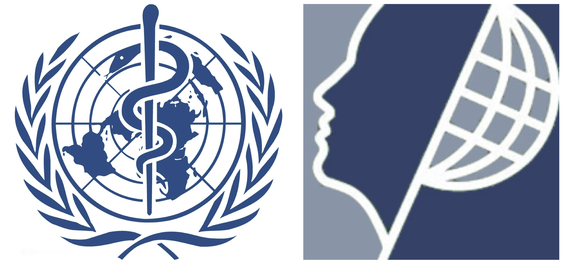At the end of June, I found myself running through the streets of Geneva with two other brain mappers--all three of us sweaty from trying to catch the bus. Even though I live in New Jersey and am used to muggy weather in the summer, I couldn't help but recognize how humid it was. We nearly missed the bus that would take us to the World Health Organization (WHO) to talk about how the Organization for Human Brain Mapping (OHBM) and WHO can work together to improve international public health through brain imaging research. Thankfully, we made it on board and were able to get on with the important work of the day.
On July 1st, 2016, I joined a diverse group of behavioral neurologists, radiologists, psychiatrists, neuroscientists and public health professionals from around the world who gathered in that building for a joint meeting between the WHO and OHBM. The WHO building opened its doors in 1966 and carries the stamp of time. Interestingly, we were all there to discuss something that could not have even been imagined in 1966 - applications of brain imaging research to matters of public health.

On July 1st, 2016, the WHO (left) and OHBM (right) joined forces to discuss how the two organizations, in conjunction with the many brain initiatives, can work together to improve international public health through brain imaging research.
The gathering was led by Dr. Shekhar Saxena, the Director of the Department of Mental Health and Substance Abuse from the WHO, and Dr. Pedro Valdes-Sosa, the Vice-Director for Research of the Cuban Neuroscience Center. The multi-cultural and multi-national group of people who attended the meeting consisted of medical doctors, professors, researchers, and students. They all gathered with the goal of finding 'low hanging fruit' in brain imaging research applications. The joint meeting focused specifically on neurological disorders, mental health, and substance abuse. One of the key questions was: How do we enhance translation of brain imaging research for the betterment of public health so that it's accounted for in policy making?
While many topics were discussed to answer this question, the topic of improving access to rehabilitation programs rang particularly true to my heart as I work with people who directly benefit from cognitive rehabilitation. These programs are essential in promoting brain plasticity and increasing usage of skills that have become impaired due to a neurological or mental illness. Brain imaging research visualizes the plasticity in brain function that comes with rehabilitation, increasing awareness and acceptance of this important treatment. Unfortunately, as mentioned by Dr. Valdes-Sosa, a significant number of people in low and middle-income countries lack access to hospital and clinical facilities to participate in such programs. That's where the use of telecommunication technology to diagnose and treat patients remotely shows promise. Known as telemedicine, it was a topic discussed by Katrin Amunts, a professor at Jülich Research Centre and the director of the Cecile and Oskar Vogt Institute for Brain Research at the Heinrich Heine University. Telecommunication can help monitor rehabilitation adherence, cut on travel costs, and alleviate lack of physical access for a person with disability and thus, holds great promise for improving the quality of life of people with disabilities and overall public health.
It was honoring and humbling to be present behind the scenes of something that promises to truly have a global impact. The motivation and desire of the group to achieve translational applications of brain research was palpable and inspiring. The first meeting between WHO and OHBM already accomplished a lot: it brought together representatives of several brain initiatives from different countries, initiated the dialogue about making brain imaging research more relevant for public health, and identified the key challenges to focus on. Just as I had been physically racing to the WHO building at the beginning of the day, my mind was racing just the same as I left the WHO building with all of the new ideas generated through collaborative conversation. We were filled with invigorating energy knowing that the goals of these conversations were not just ideas of the day, but will eventually become realities of the near future.
